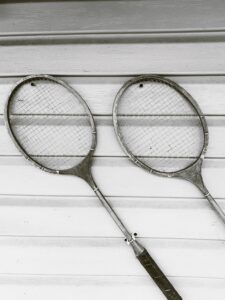In (real) tennis you need to take almost every shot. If you don’t return the ball, your opponent wins.
However, even though you need to return the ball over the net, you don’t have to go all-in with each and every shot. You can control the risk – sometimes you push, other times you return the ball safely in order to stay in the game. Finding the right balance is key.
But even when playing it safe, unforced errors can and do happen. Errors are a natural part of the game. If you want to win on the courts, you need to learn to let them go. You can’t undo them anyway. Clear your mind, move on and focus on the next 1,000 shots instead.
Professional tennis players are professionals at making and accepting mistakes.
So, what does this have to do with trading? A lot.
Unforced errors also exist in the world of trading. Selling OTM calls on GameStop while the WSB crowd is taking the other side of that bet? Unforced error.
Yet, even though unforced errors can happen in trading, they really shouldn’t. You may have to take every shot when playing tennis, but you don’t need to take every trade when operating in the markets. Instead you can sit on the sidelines and watch the game, or patiently wait for an easy smash. That’s a great advantage. Advantage trader!
A robust, rules-based trading process can protect the trader from making bad shots at the markets. As in tennis, the trader making the least amount of unforced errors usually wins.
My trend following trading systems tells me when to play and when to watch. Watch = no position.
Some traders like systems that are either long or short at any point in time (continuous systems) – something I fail to understand. Not having to trade is an option – a free option – and I don’t see any reason to give it up. Having no position is having a position, and I intentionally programmed my system such that it can wait and observe.
Waiting for the right shot is like having a hammer and waiting for a golden nail. Why do you want to use that hammer to hit on screws? If there’s no nail in sight, you don’t swing the hammer.
My system tends to hit 2-3% golden nails. Those hits not only make my day, they tend to make my year. All the remaining trades may make a bit of money, scratch zero, or – more likely – lose money. But: My system is designed to keep all of these losses small, which in turn allows me to play the game for the long run.
What this means is that I need to be a professional and elegant loser in order to win in the markets. Like in tennis, losing is part of the game.
#happytrading
PS – If you want to watch some cool tennis, check this out.






